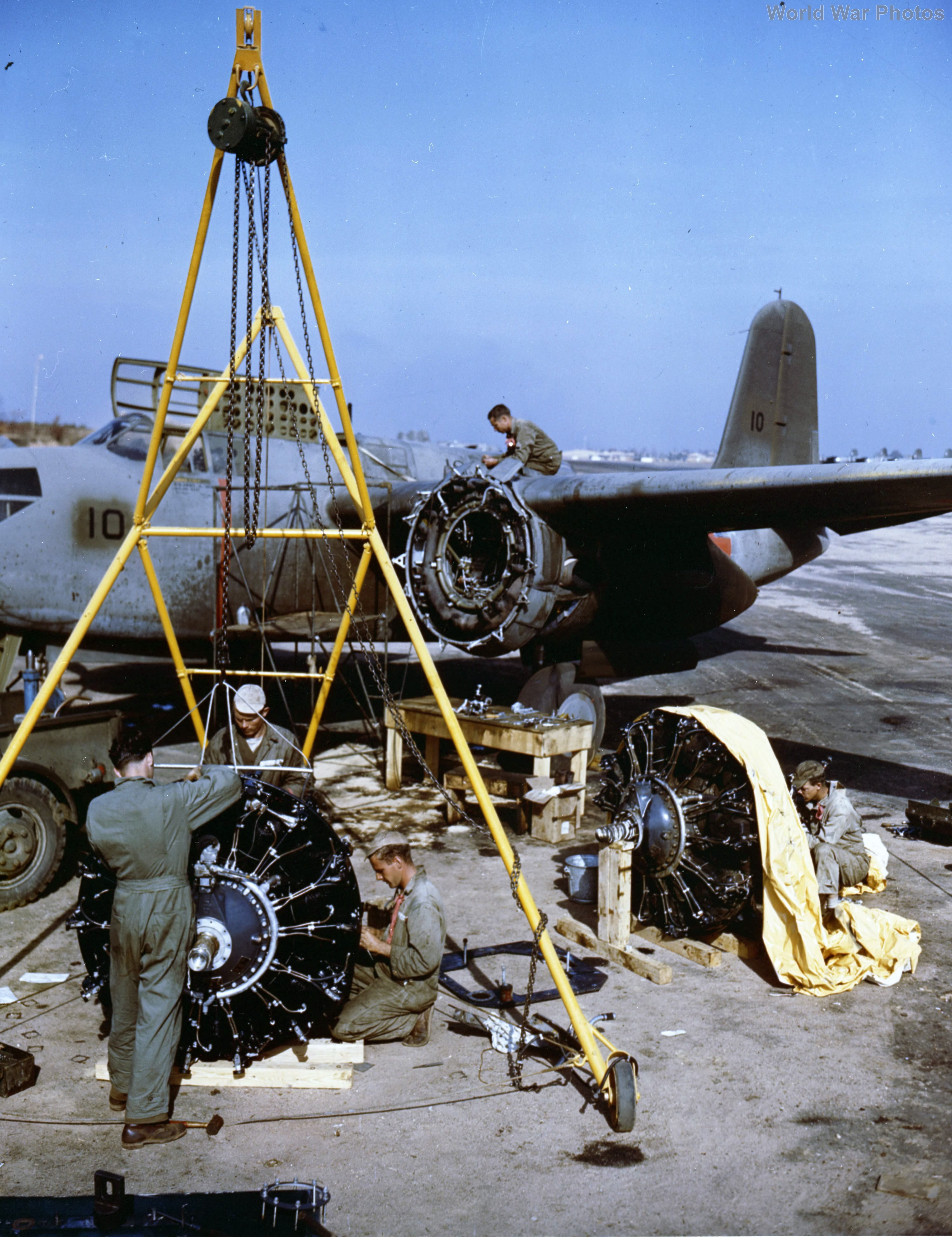The Wright R-2600 Cyclone was Wright Aeronautical’s first successful two-row radial engine, marking a significant achievement in the development of air-cooled radial engines. Developed in the mid-1930s, the R-2600 combined the lessons learned from earlier single-row designs, such as the R-1820, with advancements necessary for more powerful two-row configurations.
Development and Design
- Configuration and Specifications: The R-2600 was a 14-cylinder, two-row radial engine with a displacement of 2603 cubic inches (42.7 liters). It shared the 6.125-inch bore of the R-1820 but featured a shorter stroke of 6.3125 inches. This engine marked a milestone in overcoming the challenges associated with two-row radial designs, which had previously hindered Wright Aeronautical’s efforts.
- Cylinder and Valve Design: The engine featured two pushrod-actuated valves per cylinder housed in hemispherical combustion chambers. Early versions had integrally machined cooling fins on the steel cylinder barrels. Later models incorporated Wright Aeronautical’s patented “W” finning, a design that included an aluminum muff swaged onto the barrel to enhance cooling and facilitate barrel repairs.
- Crankcase and Internal Components: The crankcase was initially an aluminum forging, later switched to steel for increased strength. It was split vertically along the cylinder centerlines, resulting in a three-piece assembly. The engine used one-piece master rods, initially with copper-lead bearings, later upgraded to silver with a lead flash, demonstrating a preference for proven materials and technologies over experimental ones.
Mechanical Innovations
- Counterweights and Bearings: The R-2600 incorporated dynamic counterweights, with each crankshaft throw equipped with one. The crankshaft was supported by three roller bearings, continuing the tradition of using rolling-element bearings in Wright’s radial engines.
- Supercharging: Wright Aeronautical developed its own supercharger for the R-2600 after issues with General Electric’s designs. The engine featured a magnesium casting supercharger housing, initially with single-speed supercharging and later with two-speed supercharging. This housing also supported the engine mounts. Carburetion was managed by either Holley or Bendix injection carburetors.
Performance and Applications
- Power Output: Initially, the R-2600 was rated at 1500 horsepower at 2400 RPM. Throughout its production, improvements increased its output, reaching up to 1900 horsepower at 2800 RPM. These enhancements included the substitution of steel crankcases for aluminum, the adoption of “W” finning for better cooling, stronger rods and cranks, and higher boost pressures.
- Series and Manufacturing: The engine was produced in several series during World War II: the A series (1500 hp), B series (1700 hp), and BB series (1900 hp). Production primarily took place at facilities in Paterson, New Jersey, and Cincinnati, Ohio. The BB series, introduced in 1944, was the last major variant before production ceased with the war’s end.
Experimental Variants
- R-2170: An experimental short-stroke version of the R-2600, designated the R-2170, was developed with a stroke reduced to 5.25 inches. This variant aimed to reduce the engine diameter from 55 inches to 47 inches, though it never entered production.
The Wright R-2600 was a crucial engine during World War II, used in a variety of aircraft, including the Boeing B-17 Flying Fortress and the North American B-25 Mitchell. Its development and production marked significant advancements in the capabilities and reliability of air-cooled radial engines.
